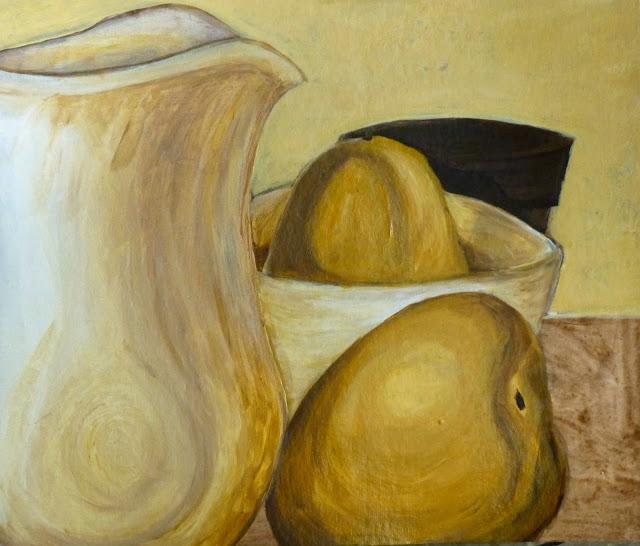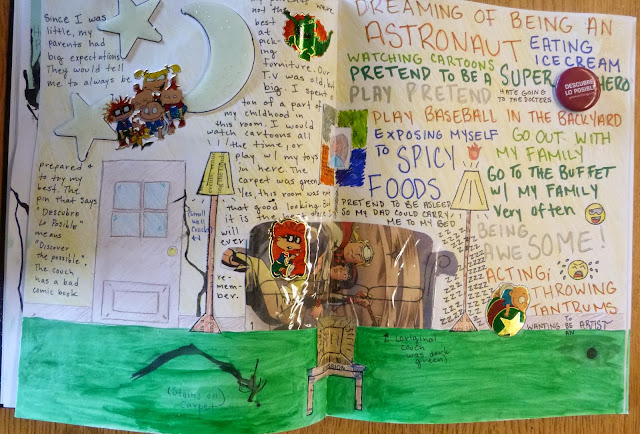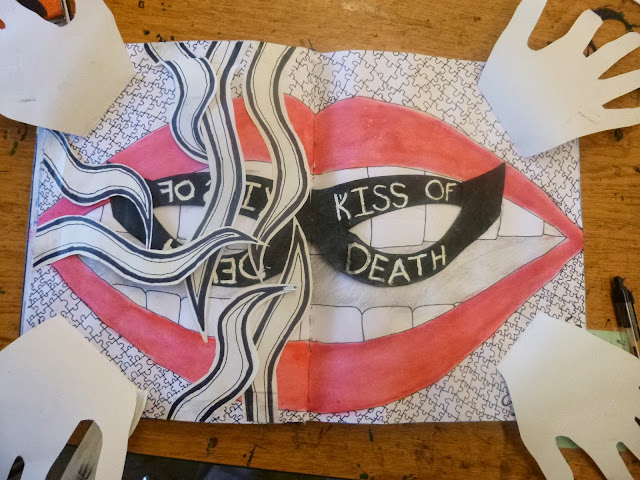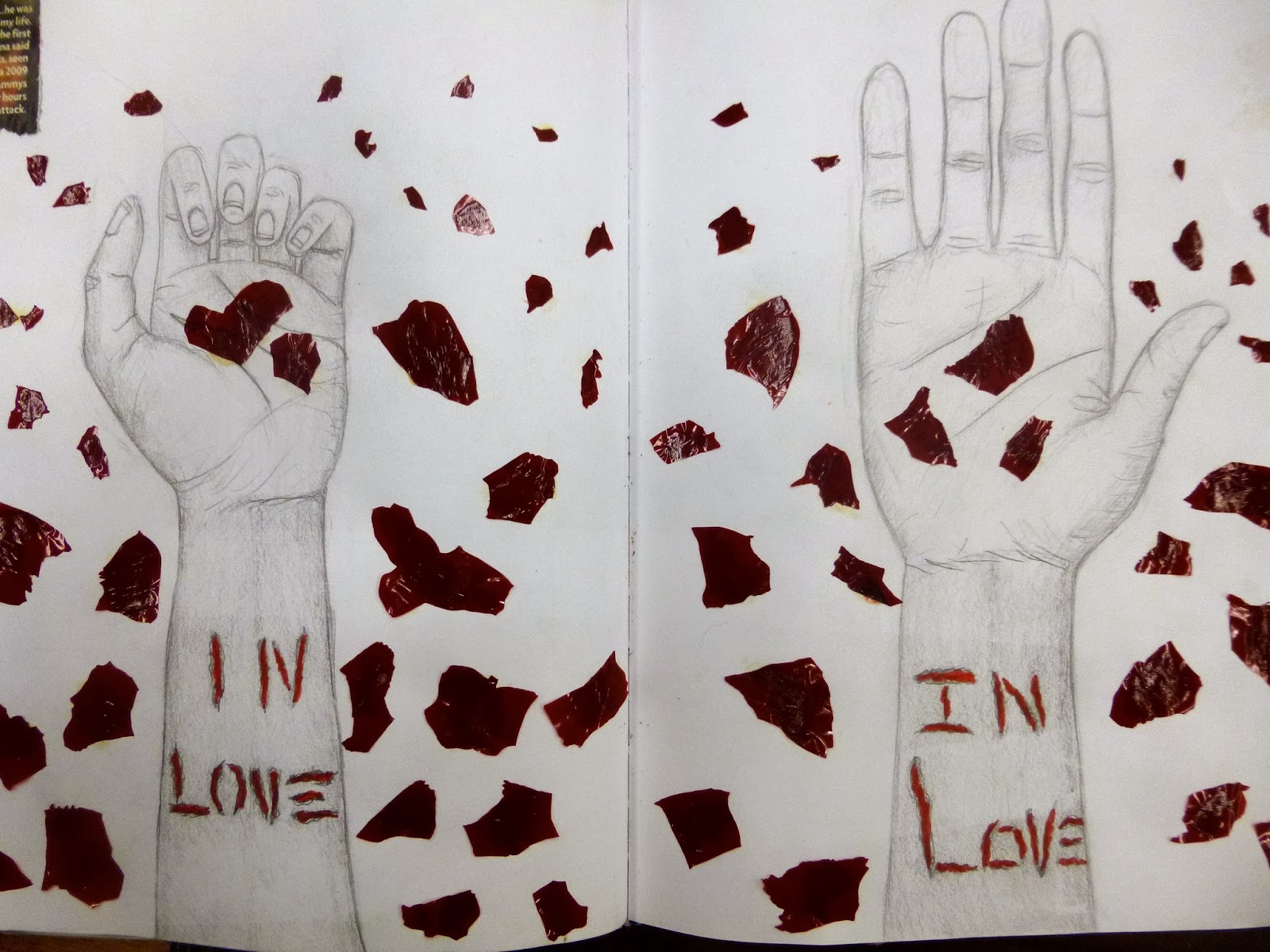

First, we discussed how another way to capture a form, besides lines and fine detail, is to see its very specific shape (more as a whole). We looked at work by Matisse in his later years as he "drew with scissors" to capture descriptive shapes and forms.


Students used only scissors (no drawing tools) to cut shapes they were seeing as they looked at a live figure model. They had access to many colors and various textures. Some students cut the entire silhouetted shape of the figure all at once and added to it. Other students looked at each body part as a separate shape and glued them together like a puzzle.







The next day, students tried gesture drawing with charcoal. They drew rapidly, trying to capture the essence of poses which lasted only a minute. They looked for long lines and basic shapes to help them, and they built the limbs and head out from the torso, or center, of the person.
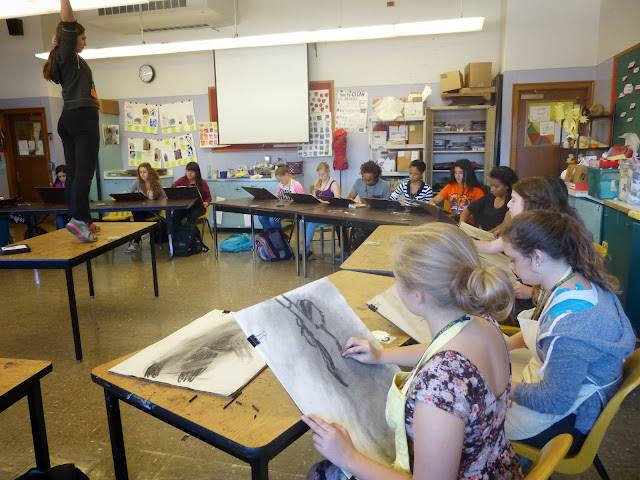

The following day, students captured two 15 minute poses using ink. They set up the ink work using a gesture drawing in pencil, in order to make the figure large enough on the page. They then slowed down and tried to capture the inside and outside lines of the pose, just like they practiced with contour line drawing.





Finally, at the end of the week, students had access to both collage and ink as they approached a single pose for 40 minutes. They chose to use ink, collage or a combination of both.












